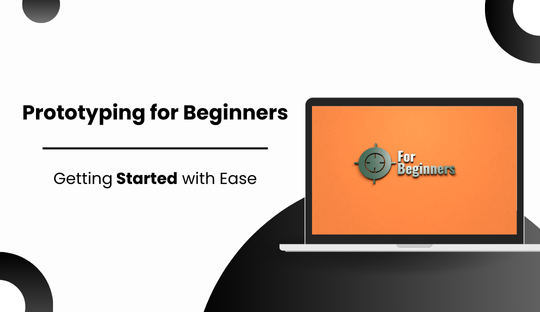
Prototyping for Beginners: Getting Started with Ease
Prototyping is an essential phase in the design process, bridging the gap between your initial ideas and the final product. It allows designers to test concepts, gather user feedback, and refine their designs before committing to full development. For creative brand companies like Flykez CO in Georgia, mastering prototyping can significantly enhance the quality and efficiency of your projects. In this blog post, we’ll explore the basics of prototyping, introduce some essential tools, and share practical techniques to help you get started with ease.
Understanding Prototyping
Prototyping involves creating an early model of a product to visualize and test its functionality. It can range from simple sketches (low-fidelity prototypes) to detailed, interactive models (high-fidelity prototypes). The primary goal is to identify any issues early in the design process, saving time and resources.
Focus Keywords: Prototyping Tools, Prototyping Software, Prototyping Techniques
Why Prototyping is Important
- Visualize Concepts: Prototyping helps in transforming abstract ideas into tangible designs, making it easier to communicate your vision to stakeholders and team members.
- User Testing: Early prototypes allow for user testing, providing valuable feedback on usability and functionality.
- Identify Issues: By testing a prototype, designers can identify and resolve issues before moving to the development stage.
- Save Time and Money: Catching problems early in the design process can prevent costly revisions later on.
Essential Prototyping Tools
Several tools are available to help you create effective prototypes. Here are some popular ones:
1. Figma
Figma is a cloud-based design tool that supports real-time collaboration. It’s perfect for teams that need to work together on a project simultaneously.
Features:
- Real-time collaboration
- Vector graphics editing
- Prototyping and interactive design
- Integration with other design tools
Focus Keywords: Prototyping Tools, Prototyping Software, Web Prototyping
2. Adobe XD
Adobe XD is a versatile tool for creating high-fidelity prototypes. It offers a comprehensive set of features for designing and testing user interfaces.
Features:
- Interactive prototypes
- Voice prototyping
- Integration with Adobe Creative Cloud
- Co-editing capabilities
Focus Keywords: High-Fidelity Prototypes, Prototyping Software
3. Sketch
Sketch is widely used for web and mobile app design. It’s known for its user-friendly interface and extensive library of plugins.
Features:
- Vector-based design
- Prototyping and collaboration tools
- Extensive plugin library
- Easy integration with other design tools
Focus Keywords: Prototyping Tools, Web Prototyping
Prototyping Techniques for Beginners
Getting started with prototyping can be simple if you follow these basic steps And Also Read About How to Present Your Prototype to Investors and Stakeholders
1. Start with Low-Fidelity Prototypes
Begin with simple sketches or wireframes. These low-fidelity prototypes focus on the layout and structure of your design without getting into detailed visuals. Tools like Balsamiq are excellent for this stage.
Focus Keywords: Prototyping Techniques, Low-Fidelity Prototypes
2. Develop High-Fidelity Prototypes
Once you have a clear structure, move on to high-fidelity prototypes. These should include detailed visuals, interactions, and animations. High-fidelity prototypes provide a more accurate representation of the final product, making them suitable for user testing and stakeholder presentations.
Focus Keywords: High-Fidelity Prototypes, Prototyping Techniques
3. Iterate Based on Feedback
Prototyping is an iterative process. After creating your prototype, conduct user tests to gather feedback. Use this feedback to refine your design. Repeat this process until your prototype meets all requirements.
Focus Keywords: Prototyping Techniques, User Testing
4. Use Prototyping Software
Leverage prototyping software to streamline your workflow. Tools like Figma, Adobe XD, and Sketch offer features that simplify the creation and testing of prototypes.
Focus Keywords: Prototyping Software, Prototyping Tools
Conclusion
Prototyping is a powerful technique that can significantly improve the quality of your design projects. For creative brand companies like Flykez CO, mastering prototyping tools and techniques is crucial for delivering exceptional website designs, brand identities, and digital marketing solutions. By starting with low-fidelity prototypes and gradually moving to high-fidelity models, you can ensure your designs are user-friendly and meet all project requirements.
Whether you’re working on a new website design or a mobile app, the right prototyping tools and techniques will help you visualize your ideas, gather valuable feedback, and create a polished final product. Embrace prototyping as a core part of your design process and watch your projects reach new heights.
For more information on how Flykez CO can help with your design and prototyping needs, visit Flykez CO.
Focus Keywords Recap: Prototyping Tools, Prototyping Software, Prototyping Techniques, Web Prototyping, High-Fidelity Prototypes, Low-Fidelity Prototypes
